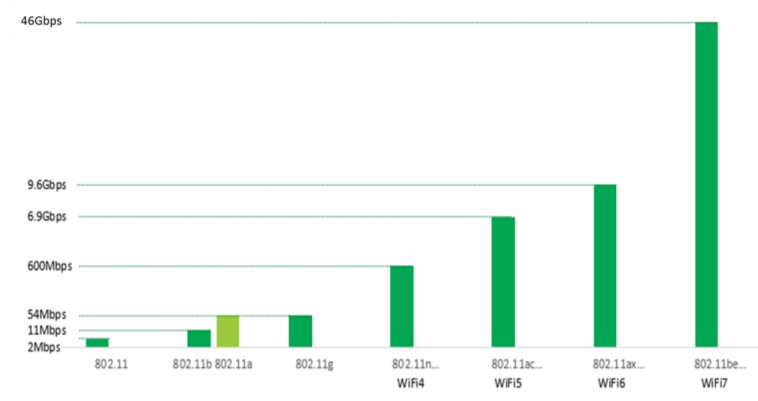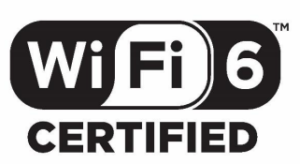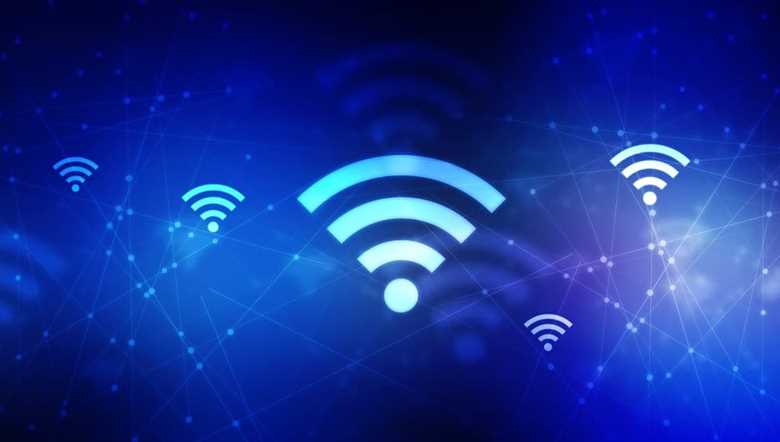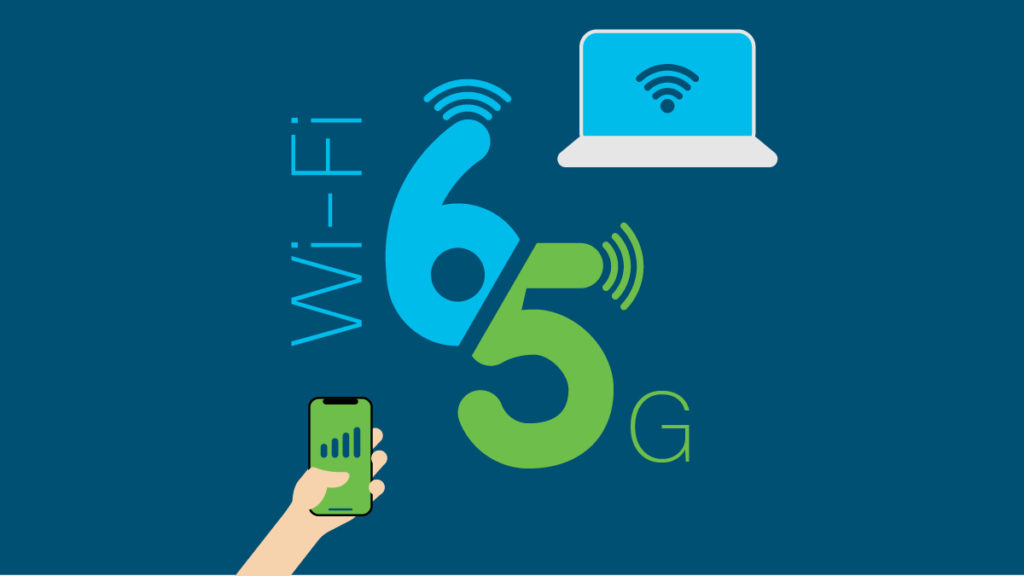Introduction
The demand for wireless access from users has shifted from a luxury to a necessity. The need for extra bandwidth is growing exponentially. This has caused network performance to become critical for businesses and consumers alike. Everyone has come to expect their Wi-Fi connection to be reliable and fast.
Technology has come a long way in just a few short years. The rapid increase in the need to work from home especially due to COVID-19. Because of this, the wireless standards need to keep pace. Besides bandwidth, the biggest issue with networks is latency. Latency is the pause in connection as the network tries to keep up with traffic. This has adverse effects on any live event like video conferencing, gaming, voice, and IoT traffic.
What is WiFi?
Wi-Fi is a short-range wireless access technology that converts signals from wired to wireless based on the IEEE ( Institute of Electrical and Electronics Engineers) 802.11 series protocols. It has become the preferred way for users to access the Internet both in the home and at work.
The 802.11 working group has about 400 active members from more than 200 wireless companies. It consists of standing committees, study groups, and numerous task groups. Over the years, various 802.11 task groups have been in charge of revising and amending the original standard.
Wi-Fi Timeline
In 1999, wireless was commercially introduced as a “nice to have” feature with the 802.11a and 802.11b. 802.11b, the most commonly used standard at the time, had very low speeds — only up to 11 Mbps but there were no Wi-Fi mobile devices and very few laptops, so 11 Mbps was fast enough.

Evolution of the IEEE802.11 Standards
By 2003, Wi-Fi-enabled mobile devices were being introduced in the market, and portable laptops became common for both business and personal use. The 802.11g standard was delivering up to 54 Mbps speeds on the 2.4 GHz frequency band.
In 2007, Apple introduced the first iPhone, and the smartphone became a modern reality. The 802.11n standard was followed in 2009, delivering 100 Mbps of usable throughput. The 802.11n standard also brought about faster theoretical data rates of up to 600 Mbps and supported both 2.4 and 5 GHz devices.
In 2013, 802.11ac expanded and simplified many of the technologies of 802.11n: Even higher data rates prevailed; however, 802.11ac only operates in the 5 GHz frequency band. Although data rates of up to 6.93 Gbps are theoretically possible with 802.11ac, in the real world, data rates of up to 400 to 600 Mbps are more likely. 802.11ac also introduced a multi-user technology known as multi-user MIMO (MU-MIMO).
The evolution of the above-mentioned five Wi-Fi generations (802.11b, 802.11a, 802.11 g, 802.11n, and 802.11ac) mainly revolved around increasing the theoretical rate, that is, the throughput in a high Signal Noise Ratio (SNR) environment, to meet the growing bandwidth demand. As new services such as smart homes, video conferencing and AR/VR gain popularity, Wi-Fi networks begin to see congestion thanks to the increasing number of
smart devices. That makes boosting spectral efficiency more of an issue than increasing the theoretical rate for the next Wi-Fi generation, 802.11ax, to address as it seeks to provide access for more Stations.
To help alleviate the problem of latency, there was a need to develop wireless networks that are more efficient in handling the expanding bandwidth-hungry traffic. A new standard called 802.11ax was introduced in 2018. The Wi-Fi Alliance renamed it Wi-Fi 6. One of the main focuses of Wi-Fi 6 was to enhance the efficiency of how access points handle multiple devices.
What is Wi-Fi 6?
Wi-Fi 6 is the latest standard from the Wi-Fi Alliance based on the 802.11ax protocol and provides critical capabilities needed for next-generation enterprise requirements.

Wi-Fi Certified
Wi-Fi CERTIFIED 6™, a certification program from Wi-Fi Alliance®, will ensure that devices based on Wi-Fi 6, or IEEE 802.11ax technology, meet industry-agreed standards, and deliver key benefits such as higher data rates, greater network capacity, better power efficiency, and performance in remote or congested environments.
Wi-Fi CERTIFIED 6 Scenarios
Wi-Fi CERTIFIED 6 devices will deliver capabilities required to ensure that users’ next-generation connectivity needs are reliably met in a wide variety of scenarios:
- Home: In single-family homes or multi-family dwellings, Wi-Fi CERTIFIED 6 smart home products and personal devices efficiently co-exist, enabling users to simultaneously manage the home, stream ultra-high-definition content on-demand, and support immersive experiences.
- Public Wi-Fi: Wi-Fi CERTIFIED 6 devices bring better user experiences in densely populated environments with efficient spectral resource management and consistent service as users traverse large networks.
- Enterprise: Increased automation in manufacturing environments, enhanced telepresence and e-learning capability, and extended remote services such as healthcare monitoring are emerging uses for Wi-Fi CERTIFIED 6 in business, reaching beyond the ability to effectively handle a large number of users for mission-critical applications.
Key capabilities and benefits
Wi-Fi CERTIFIED 6 devices operate in the 2.4 and 5 GHz bands and deliver greater capacity than the prior generation of Wi-Fi. Wi-Fi CERTIFIED 6 devices bring reliable performance indoors, outdoors, and in dense environments. Client devices will also demonstrate longer battery life.
Key features enabling the benefits of Wi-Fi CERTIFIED 6 are listed below:
- Orthogonal frequency division multiple access (OFDMA) enables more users to simultaneously operate in the same channel and therefore improves efficiency, latency, and throughput.
- Multi-user multiple input, multiple outputs (MU-MIMO) allows more data to be transferred at once and enables an access point to handle a larger number of concurrent clients.
- Transmit beamforming improves signal power resulting in significantly higher rates at a given range.
- 1024 quadrature amplitude modulation mode (1024-QAM) enables throughput increases by as much as 25 percent over Wi-Fi 5.
- Target wake time (TWT) makes Wi-Fi CERTIFIED 6 devices more power-efficient.
What is The Next?
On April 23, 2020, the FCC voted unanimously to make 1,200 megahertz of spectrum available for unlicensed use in the 5.925-7. 125 GHz (6 GHz) band. This historic event was the culmination of several years of work by Wi-Fi advocates underscoring the FCC’s commitment to promoting unlicensed standards as the indispensable engine for wireless connectivity for American consumers.
The extension of Wi-Fi in the 6 GHz band, named Wi-Fi 6E by the Wi-Fi Alliance has been strongly advocated for by many in the WiFi industry. From chipset and equipment manufacturers to service providers and end-users, everyone agrees that more than doubling the available spectrum will revolutionize the Wi-Fi user experience.
Is There Wi-Fi 7?
When compared to Wi-Fi 6, Wi-Fi 7 ( or 802.11be) will also use multi-band/multi-channel aggregation and operation and deliver higher spectrum and power efficiency, better interference mitigations, higher capacity density, and higher cost-efficiency. The seventh generation of Wi-Fi is also referred to as Wi-Fi Extremely High Throughput as a result of its projected ability to support up to 30Gbps throughput, roughly three times faster than Wi-Fi 6.

Wi-Fi 7
IEEE plans to publish the 802.11be amendment sometime in 2024, with commercial deployment occurring around the same time. Then, just like Wi-Fi 6 and 6E, the Wi-Fi Alliance will release its Wi-Fi 7 certification program to ensure interoperability and security standards.




